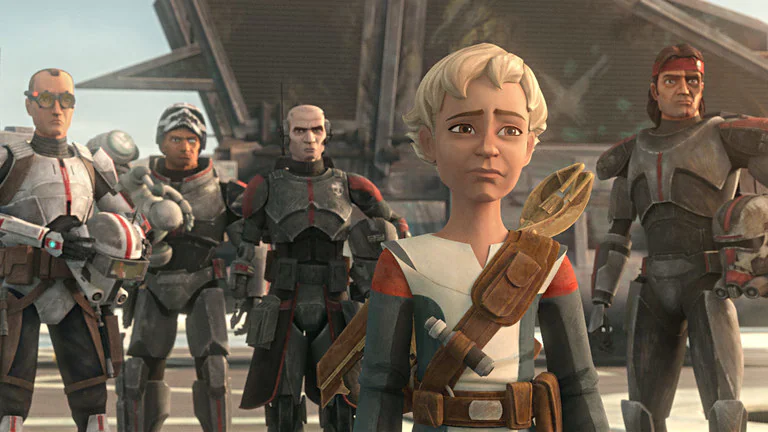On January 4th, Disney released the first two episodes of The Bad Batch season 2. Like the original season, the show is a semi-sequel to the hit TV series, The Clone Wars. It centers upon a group of clones with special abilities trying to understand what it means to live in the Empire. Like The Clone Wars, the show deals with some pretty difficult topics through animation, which is rare. Some of these ideas include choice, trust, identity, and chosen families. Currently, the first two episodes of season 2 indicate that understanding other perspectives will be a central part of the series. Additionally, the show will build on some of the franchise’s long-lasting mythology. But what on earth is the Star Wars separatist alliance, and why is the planet Serreno so important? Spoilers ahead!
In The Bad Batch, the clone troopers arrive on a mission leading them to the planet Serreno. This is an Outer Rim world that many fans will remember for being Count Dooku’s birthplace. As you might’ve guessed, the former troopers aim to find Dooku’s treasures and sell them. This way, they’ll have enough money to escape the Empire. However, one thing leads to another, and soon the Troopers are stuck in the forest as stormtroopers hunt them down.
Eventually, two other troopers meet a Separatist figure and find a data core that offers a new perspective. One ex-trooper, Tech, recognizes the data core as Separatist, but the former Separatist, Romar, corrects this. Instead, Romar claims that the core is Serennian instead. As such, this reminds Tech – and the audience – that the Star Wars separatist alliance was more than just ideology. Serreno was around before the War.
What is the Star Wars Separatist Alliance?
Image: StarWars.com
Of course, Count Dooku is the most famous resident of Serreno, but he’s not the only one. Thankfully, Romar helps to clear things up by telling us the story of the planet. Previously, the Sith controlled the planet, and then the Serennians worked together to become free. They did this without the Jedi Order’s help. However, the planet later fell back under the Empire’s control with Ramil, Dooku’s older brother, as the leader.
Later, Dooku fought Ramil and took control of the planet for himself. After becoming Count of Serreno, Dooku created the Confederacy of Independent Systems. Later, this became the Star Wars separatist alliance, which we saw develop further in The Phantom Menace. This group wanted to be separate from the Republic and its power. Also, Count Dooku used the Serrenians funds to help fight in the Clone Wars. Finally, once the Clone Wars ended, the Empire utterly destroyed Serreno with bombs.
According to Romar, some natives survived the destruction, but we don’t see them in the show. Of course, Romar’s recount misses many important details, but it’s a great overview of Serreno and the Star Wars separatist alliance.
But why is this important? Well, it helps Tech to understand that the Separatists are not one huge force. Instead, it’s made of smaller planets and people with no choice but to be in the War. Dooku treated the Serrenians badly, forcing them into supporting the Clone Wars. Clearly, War is not two sides fighting against each other. It’s more than just good vs. bad; the complexities are far greater, just like in real life.
The Bad Batch Season 2
Image: StarWars.com
Naturally, this isn’t the first time the franchise explored this idea. Indeed, Ahsoka Tano learned about this in The Clone Wars when she also dealt with the Star Wars separatist alliance. Evidently, it’s an important lesson for us to learn, and you can expect more profound moments in future episodes of The Bad Batch. Perhaps we will see it in other mediums, like the video game Jedi: Fallen Order.
The first two episodes are on Disney+, and Disney will release new episodes weekly on WednesdayThere’se’s no word on when the Ahsoka series will air, althouit’st’s confirmed later in 2023.
